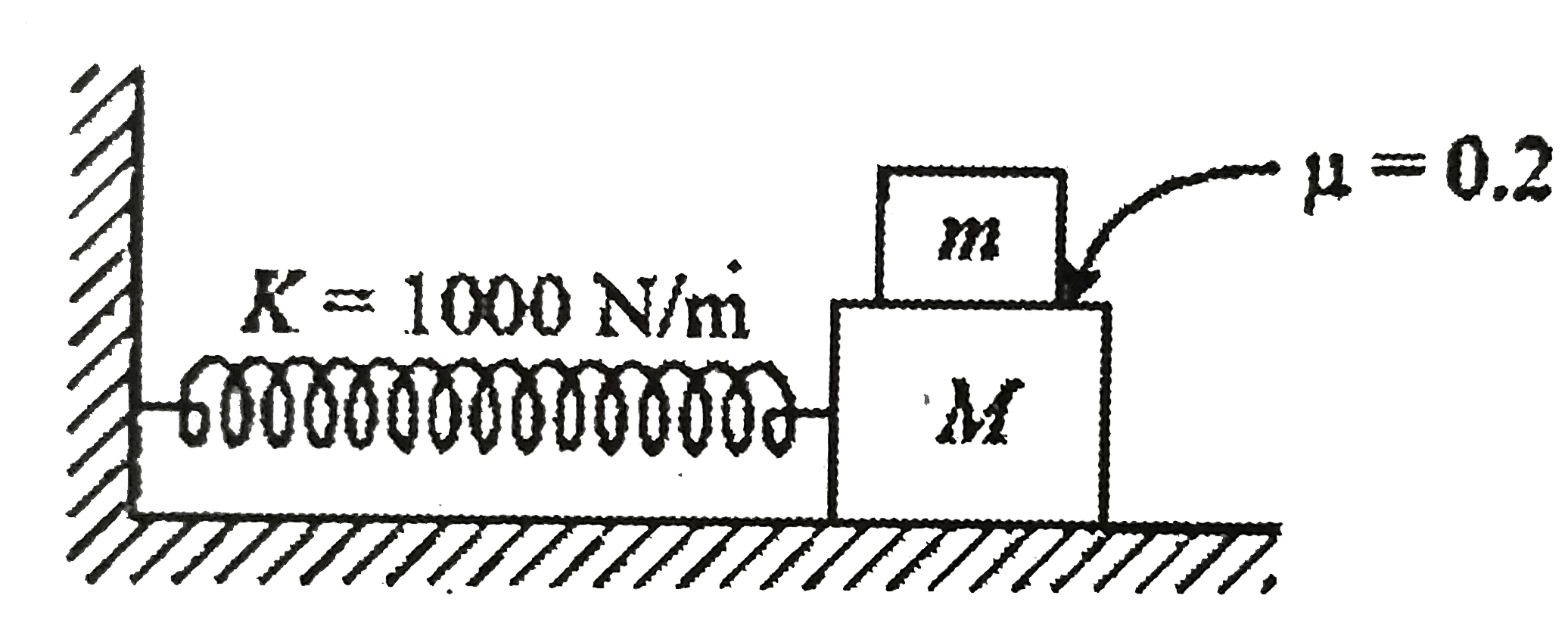A 2kg block slides on a horizontal floor with the a speed of 4m/s it strikes a uncompressed spring , and compresses it till the block is motionless . The kinetic friction force is compresses is 15N and spring constant is 10000N/m . The spring by
8.5cm
5.5cm
2.5cm
11.0cm
The correct Answer is:B
(b) Let the block compess the spring by x before stopping kinetic energy of the block =(P.Eofcompressedspr∈g)+workdo≠aga∈stiction.<br>(1)/(2) xx 2 xx(4)^(2) = (1)/(2) xx 10000 xx x^(2) + 15 xx x <br>10000 x^(2) + 30x - 32 = 0<br>rArr 50000 x^(2) + 15x - 16 = 0<br>x = (-15 +- sqrt((15)^(2) - 4 xx (50000)(-16)))/(2 xx 5000)<br>:. 0.055m = 5.5 cm.
Topper's Solved these Questions
Similar Questions
A 16kg block moving on a frictionless horizontal surface with a velocity of 4m/s compresses an ideal spring and comes to rest. If the force constant of the spring be 100N/m, then how much is the spring commpressed ?
View SolutionA block of mass m moving at a speed v compresses as spring thrugh a distance x before its speed is halved. Find the spring constant of the spring.
View Solution
Knowledge Check
A 2 kg block slides on a horizontal floor with a speed of 4 m/s. It strikes an uncompressed spring, and compresses it till the block is motionless. The kinetic friction force is 15 N and spring constant is 10000 N/m. The spring is compressed by (in cm):
A2.5B11.0C8.5D5.5A block of mass 4kg slides on a horizontal frictionless surface with a speed of 2m/s. It is brought to rest in compressing a spring in its path. If the force constant of the spring is 400N/m, by how much the spring will be compressed
A2×10−2mB0.2mC20mD200mA block of mass m is initially moving to the right on a horizontal frictionless surface at a speed v. It then compresses a spring of spring constant k. At the instant when the kinetic energy of the block is equal to the potential energy of the spring, the spring is compressed a distance of :
Av√m/2kBv√m/kCv√m/4kDmv2/4k
A block of mass m moving at a speed v compresses a spring throgh a distance x before its speed is halved. Find the spring constant of the spring.
View SolutionA block of mass 5.7kg slides on a horizontal frictionless table with a constant speed of 1.2ms−1. It is brougth momentarily to rest by compressing a spring in its path. By what maximum distance is the spring compressed ? The spring constant k=1500Nm−1.
View SolutionYou push a 2.0 kg block against a horizontal spring , compressing the spring by 12 cm. Then You release the block, and the spring sends it sliding across a tabletop. It stops 75 cm from where you released it. The spring constant is 170 N/m. What is the block-table coefficient of kinetic friction ?
View SolutionA block of mass M = 4 kg is kept on a smooth horizontal plane. A bar of mass m = 1 kg is kept on it. They are connected to a spring as shown & the spring is compressed. Then what is the maximum compression in the spring for which the bar will not slip on the block when released if coefficient of friction between them is 0.2 & spring constant = 1000 N/m : (Take g=10m/s2)

View SolutionA block of mass m1 =2 kg slides along a firictionless table with a speed of 10m/s. Directly infront of it,and moving in the same direction is a block of mass m2 5 kg moving at 3 m/s. A mass less spring with a spring constant 11.2 N/cm is attached to as shown in figure-5.146. When the block collide,what is the maximum compression of the spring ? Assume that the spring does not bend.

View Solution
